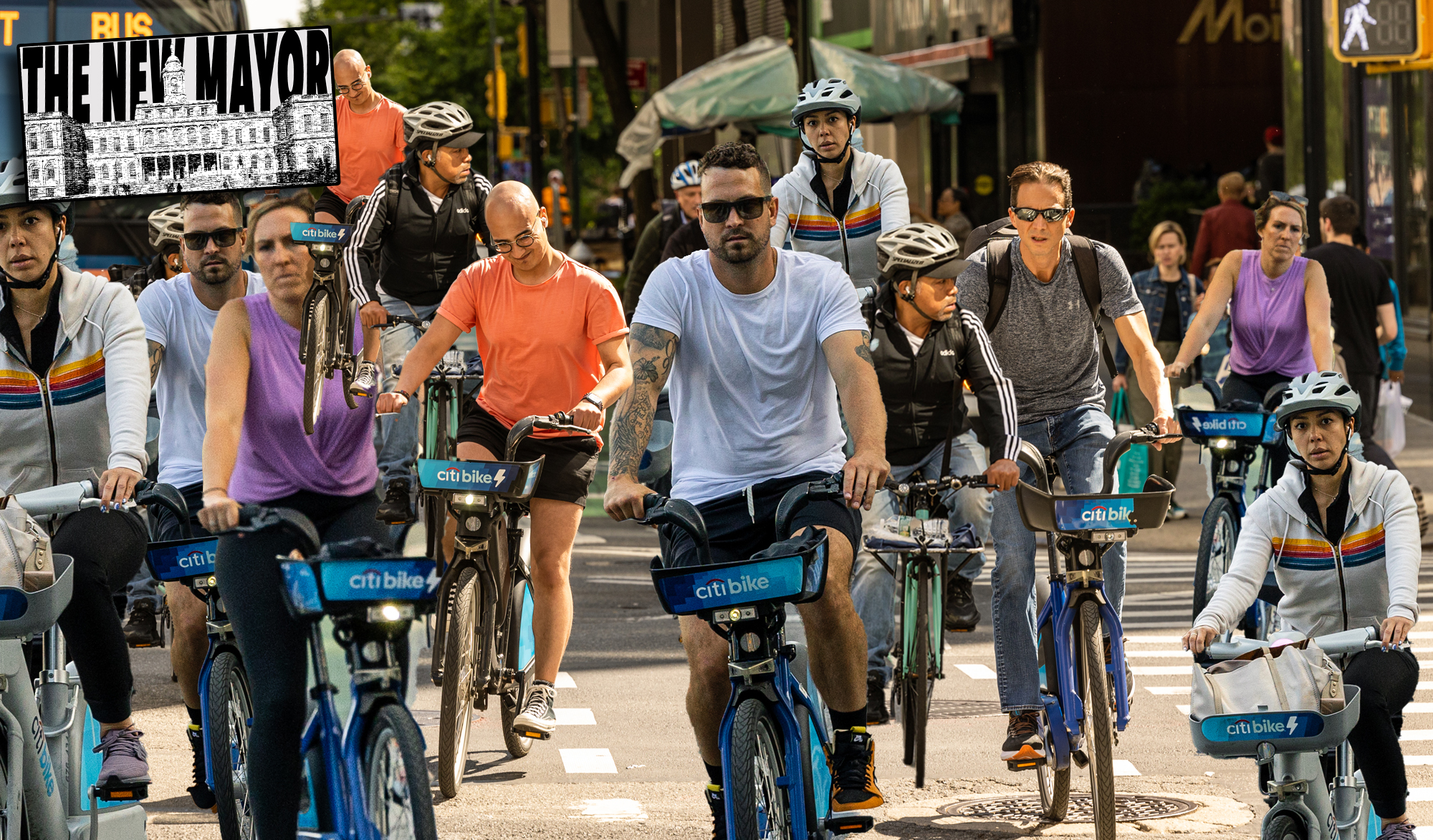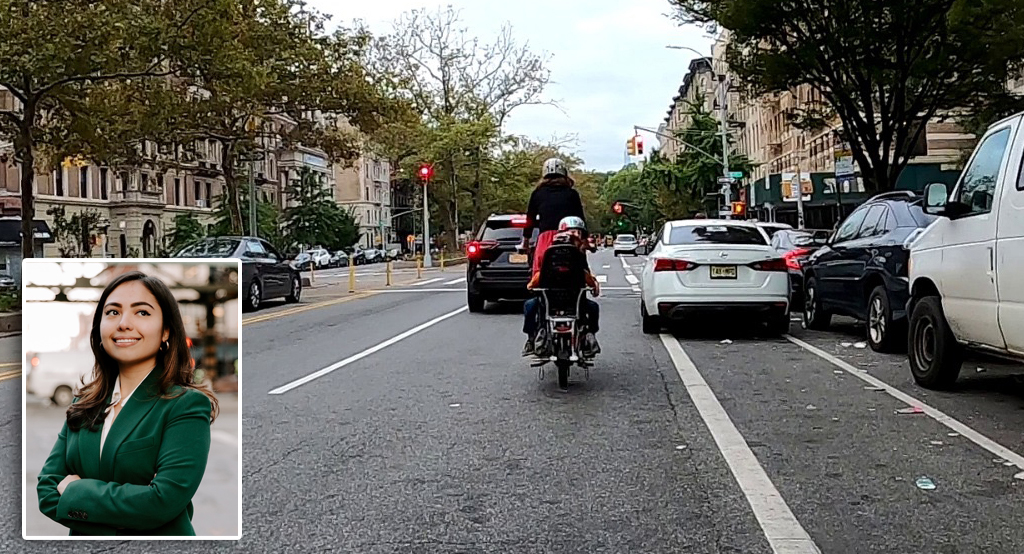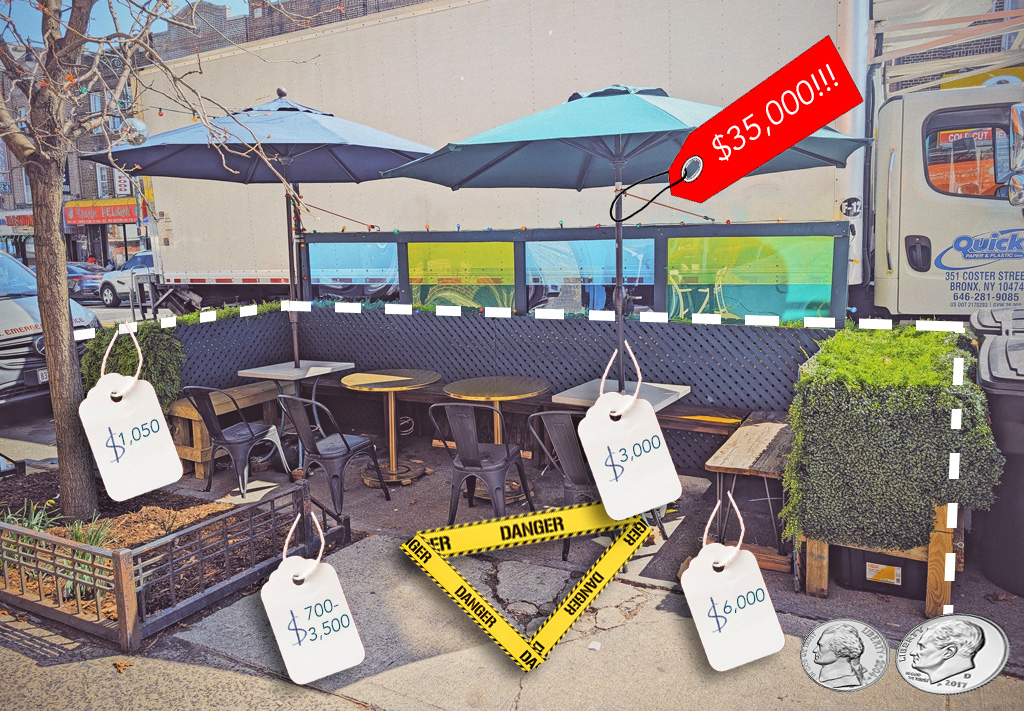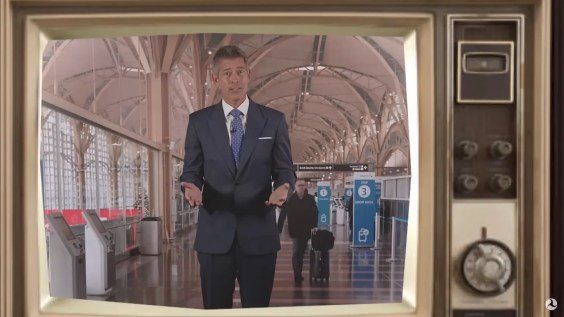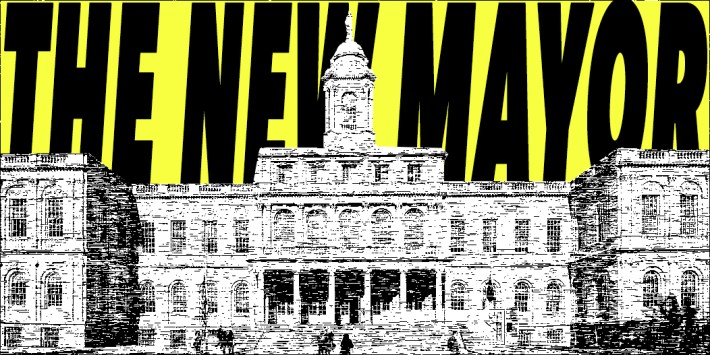
Ride on, Mr. Mayor.
Newly christened Mayor Zohran Mamdani will have lots of maneuverability when it comes to building bike lanes, thanks to an ongoing cycling boom that has seen New Yorkers take nearly four million more bike trips in 2024 compared to just two years earlier at the dawn of the Adams administration.
The increase amounts to 33 percent more trips between 2022 and last year, a boom that serves as a black mirror to the mayoralty of Mayor Adams, who went from a self-professed biking champion to having his administration criminally exposed as a streets safety enemy by the end of his term.
Regardless of the mayor's personal transformation, his Department of Transportation's bike counters picked up 11,557,592 rides in all of 2022 and then 15,355,798 bike trips in 2024. And year-to-date cycling trips are outpacing last year as well, with about 2 percent more trips this year through the same time period last year.
Individual bike counters are also hitting impressive milestones:
- In 2024, two of the East River bridges topped more than two million riders in the same year for the first time ever, with the Williamsburg Bridge recording 2,395,213 crossings and the Queensboro Bride racking up 2,115,228 trips last year. The Williamsburg Bridge has passed the two million trip threshold this year and the Queensboro is on pace to do the same.
- Both the Kent Avenue and Pulaski Bridge bike counters surpassed one million rides last year, and have already done it again this year.
- The bike counter at Eighth Avenue and 50th Street is also on pace to pick up over one million rides this year.
- In the Bronx, the Willis Avenue bridge has an average daily ridership of 2,569 in 2025, up from 2,119 average trips per day in 2022 — a 21-percent increase.
Citi Bike is also booming as it expands further into the city. When Adams took office in January 2022, there were 1,024,053 rides taken on the system during the dreary winter month. By January 2025, there were 2,123,801 rides taken on a Citi Bike, an astounding 107-percent increase in rides well outside of the peak season for cycling.
But as people vote with their feet and their increasingly powerful calves, the city's own bike lane production hasn't kept pace — evidence that so many people want to get out there.
"People are responding to the volumes of bikes that they see on the street, and realize people are doing it and can do it, and how efficient it is in our city," said Bike New York Director of Advocacy Jon Orcutt. "But that doesn't mean Mayor Adams hit a home run or anything. He could have done much better, and we could definitely be safer."
The bike boom will allow the next mayor to advance some of the good ideas implemented by DOT during the Adams years. For instance, the "Green Wave" policy — the retiming traffic signals to encourage drivers and cyclists to go 15 miles per hour — had a small rollout under Mayor de Blasio, but was expanded along a redesigned stretch of Third Avenue in Manhattan in January this year.
Experts are on high on that sort of quick fix.
"That Third Avenue signal timing corridor is a huge opportunity ... [to] get a handle on e-bike speed or disorder, whatever you want to call it," said Orcutt. "If you did that on every big avenue, you could really get safe streets quickly. The delivery guys have figured it out; they're not [speeding] on Third because there's no incentive at all. You're just going to hit cross traffic. It's a really good example of what you could do if you just gave some thought to it and stopped worrying about racking up tickets at the Williamsburg Bridge for stupid violations."
Orcutt also suggested that the next mayor could make a better bike network without explicitly relying on protected bike lanes. Instead the mayor could grow the network by looking at the same kind of designs that have proven successful on Berry Street in Williamsburg and 31st Avenue in Astoria. The city calms bike boulevards by changing the traffic patterns on neighborhood streets instead of removing parking, which could stir up loud opposition to street redesigns.
"In places that are tougher, make more Berry Streets — low-traffic streets that can connect to the bike network," he said. "You don't have to take anybody's parking. You can do it quickly. It's really not a design issue, and you can do it on narrow streets, too. I don't know why we're not doing 20 of those a year."
Why we need a better mayor
When the book is closed on the mayoralty of Eric Leroy Adams, history will judge him lacking of a broad vision for how to tame New York's Carmageddon and usher in a bike friendly era.
As data analyst Jehiah Czebotar shows with his new bike lane installation tracker, the DOT has installed fewer total bike lane miles each year of the Adams administration compared to almost every year of the de Blasio mayoralty.

On the plus side, under Mayor Adams, the share of unprotected bike lanes and sharrows as a percentage of the total bike lane mileage has dropped. Mayor Adams also kept pace with his predecessor's greenway installations in 2022 and 2023 with 19.5 miles and 13.8 miles, though some of those bike lanes aren't on the actual street grid and that number fell to 8.1 miles last year.
But in installing on-street protected bike lanes, Mayor Adams hasn't been able to top the peak of 35.5 miles installed in 2018 under then-Mayor Bill de Blasio. Adams's DOT has only once — in 2024 — surpassed 30 miles in on-street protected bike lanes with 30.9 miles.
Mayor Adams undermined his own successes on building bike lanes and living up to his campaign promise of building 300 miles of protected bike lanes in four years:
- On McGuinness Boulevard, what should have been a layup to install a protected bike lane where the neighborhood's residents and elected officials all demanded it instead turned into a series of rollbacks and compromises that were actually driven by a farcical bribery scheme involving his chief adviser Ingrid Lewis-Martin.
- A protected bike lane on Ashland Place that could have connected the entire Fourth Avenue protected bike lane to the Brooklyn and Manhattan bridges had a block cut out at the behest of real estate developer Two Trees, resulting in a chaotic and strange design.
- The Underhill Avenue bike boulevard sat in an incomplete form for almost six months as the mayor looked for a survey that would prove the neighborhood didn't want it (he never did get that result).
- The law and order mayor allowed the city's mountable bike lanes to become parking lanes.
- The South Outer Roadway of the Queensboro Bridge was finally opened to pedestrians this year, but only after the mayor called off its original opening date in a still-unexplained fit of pique.
- Three blocks of the Bedford Avenue protected bike lane were disassembled in an election year Hail Mary for a race in which Adams did not even wind up running.
Adams's final act of bike policy has been to impose a 15-mile-per-hour speed limit on e-bikes and exaggerate the dangers of e-bikes — and fail to use his state-granted power to lower automobile speed limits to 20 miles per hour. It's in stark contrast to the mayor-elect who showed up on a bike to a 2021 press conference on building lots of secure bike parking, which he never did. As mayor, Adams was last seen on a bike in April 2022.
Cycling advocates, heartened by the bike boom, are simply ready to pedal to a different future under Mayor Mamdani.
"The numbers are clear — New Yorkers want to bike," said Transportation Alternatives Director of Communications Alexa Sledge. "We're choosing bikes despite the current mayor's ongoing efforts to criminalize riding through criminal summonses and arbitrary speed limits, so I can only imagine how many New Yorkers will choose to ride when there's a real protected bike network, no threat of criminalization, and more affordable bike share."
